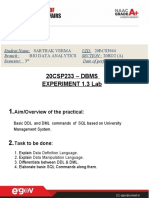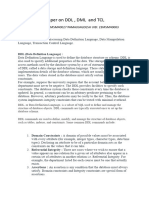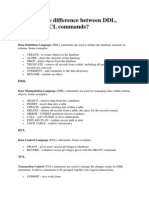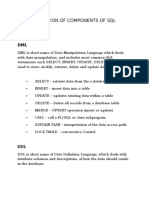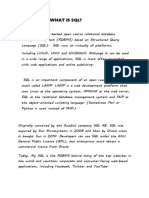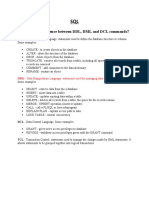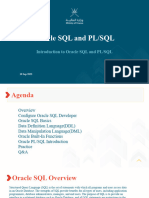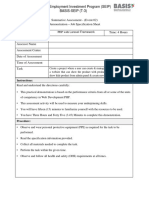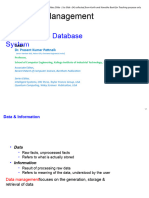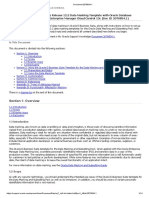0% found this document useful (0 votes)
8 views4 pagesData Base Assignment New
DDL (Data Definition Language) and DML (Data Manipulation Language) are two core components of a Database Management System (DBMS) that define and manage data structures and data within those structures, respectively. DDL commands like CREATE, ALTER, and DROP establish and modify database frameworks, while DML commands such as SELECT, INSERT, UPDATE, and DELETE handle the actual data manipulation. Both are essential for effective database management, with DDL focusing on structure and DML on data content.
Uploaded by
hunderaamanuelCopyright
© © All Rights Reserved
We take content rights seriously. If you suspect this is your content, claim it here.
Available Formats
Download as DOCX, PDF, TXT or read online on Scribd
0% found this document useful (0 votes)
8 views4 pagesData Base Assignment New
DDL (Data Definition Language) and DML (Data Manipulation Language) are two core components of a Database Management System (DBMS) that define and manage data structures and data within those structures, respectively. DDL commands like CREATE, ALTER, and DROP establish and modify database frameworks, while DML commands such as SELECT, INSERT, UPDATE, and DELETE handle the actual data manipulation. Both are essential for effective database management, with DDL focusing on structure and DML on data content.
Uploaded by
hunderaamanuelCopyright
© © All Rights Reserved
We take content rights seriously. If you suspect this is your content, claim it here.
Available Formats
Download as DOCX, PDF, TXT or read online on Scribd
/ 4

